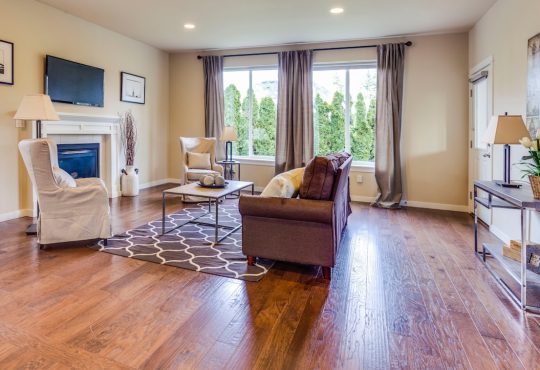
Unleash Your Child’s Imagination with These Creative and Functional Kids’ Room Design Ideas
Introduction: Why Creativity Matters in Kids’ Room Design
Creativity is a vital aspect of child development, as it helps children to think outside the box, problem-solve, and express themselves. When it comes to designing a child’s room, incorporating elements that foster creativity is essential. A well-designed room can provide a stimulating environment that encourages imagination and exploration.
Room design plays a significant role in fostering creativity in children. The layout, colors, and decor can all contribute to creating an inspiring space that sparks their imagination. By incorporating elements such as play spaces, DIY projects, and interactive areas, you can create a room that not only looks great but also encourages your child’s creativity to flourish.
Create a Theme: Tips for Choosing a Theme and Decorating Around It
Choosing a theme for your child’s room can provide a cohesive and visually appealing design. It also allows your child to feel a sense of ownership and connection to their space. When selecting a theme, consider your child’s interests and passions. Whether they love animals, sports, or outer space, there are endless possibilities for themes.
Once you have chosen a theme, it’s time to start decorating around it. Start by selecting furniture and decor that aligns with the theme. For example, if your child loves dinosaurs, you could incorporate dinosaur-themed bedding, wall decals, and even a dinosaur-shaped bookshelf. Be creative and think outside the box when it comes to incorporating the theme into the room.
Let Them Choose: How to Involve Your Child in the Design Process
Involving your child in the design process not only gives them a sense of ownership over their space but also allows them to express their creativity and individuality. Start by having a conversation with your child about their preferences and interests. Ask them what colors they like, what themes they are interested in, and what type of furniture or decor they would like to have in their room.
Encourage your child’s input by showing them different options and asking for their opinion. For example, if you are choosing between two paint colors, let your child have the final say. This will make them feel valued and involved in the decision-making process.
However, it’s important to find a balance between your child’s preferences and practicality. For example, if your child wants a bright red room but you know that it will be difficult to repaint in the future, suggest a compromise such as incorporating red accents through bedding or decor instead.
Incorporate Play Spaces: Ideas for Creating Interactive Areas in the Room
Play is an essential part of a child’s development, as it helps them learn and explore the world around them. By incorporating play spaces into your child’s room design, you can create an environment that encourages imaginative play and creativity.
One idea for creating a play space is to designate a corner of the room as a reading nook. Place a comfortable chair or bean bag, along with a bookshelf filled with age-appropriate books. Add some cozy pillows and blankets to create a cozy and inviting space for your child to read and relax.
Another idea is to create a designated art area where your child can let their creativity run wild. Set up a small table or easel with art supplies such as crayons, markers, and paper. Hang a corkboard or magnetic board on the wall where your child can display their artwork.
Storage Solutions: How to Keep the Room Organized and Tidy
Organization is key when it comes to keeping your child’s room tidy and functional. By incorporating storage solutions into the room design, you can create a space that is both aesthetically pleasing and easy to keep organized.
One idea for storage is to use bins or baskets that can be easily accessed by your child. Label each bin with different categories such as toys, books, and clothes. This will not only make it easier for your child to find what they need but also encourage them to clean up after themselves.
Another idea is to incorporate storage solutions that double as decor. For example, you could use a bookshelf with colorful bins or baskets to store toys and books. This not only keeps the room organized but also adds a pop of color and visual interest to the space.
DIY Decor: Fun and Easy Projects to Do with Your Child
Doing DIY projects with your child is a great way to bond and encourage their creativity. It also allows them to have a sense of pride and ownership over their space. There are endless possibilities for easy and fun DIY projects that you can do together.
One idea is to create personalized artwork for the walls. You can purchase a canvas or use a piece of cardboard as the base. Let your child choose the colors and design, and then help them paint or draw their masterpiece. Hang the artwork on the wall using colorful washi tape or frames.
Another idea is to create a DIY headboard for the bed. You can use plywood or foam board as the base, and then let your child choose fabric or paint to cover it. This adds a personal touch to the room and can be easily changed as your child’s interests evolve.
Color Psychology: How to Choose Colors that Promote Creativity and Calmness
Color has a significant impact on mood and behavior, so it’s important to choose colors that promote creativity and calmness in your child’s room. When selecting colors, consider the overall theme of the room as well as your child’s preferences.
For promoting creativity, consider using bright and bold colors such as red, yellow, and orange. These colors are known to stimulate the brain and encourage creativity. However, be mindful of using these colors in moderation, as they can also be overstimulating.
For promoting calmness, consider using cool and soothing colors such as blue, green, and purple. These colors have a calming effect on the mind and can help your child relax and unwind. Incorporate these colors through bedding, wall paint, or decor.
Lighting: Tips for Creating a Warm and Inviting Atmosphere
Lighting plays a crucial role in creating a warm and inviting atmosphere in your child’s room. It can also impact their mood and behavior. When it comes to lighting, consider incorporating different types of lighting to create a layered and functional space.
Start by ensuring that the room has ample natural light during the day. This can be achieved by using sheer curtains or blinds that allow sunlight to filter through. Natural light has been shown to improve mood and productivity.
In addition to natural light, incorporate ambient lighting such as ceiling lights or floor lamps. This provides overall illumination to the room and creates a warm and inviting atmosphere. Consider using warm white or soft yellow bulbs for a cozy feel.
Wall Art: Ideas for Adding Personality and Character to the Room
Wall art is an excellent way to add personality and character to your child’s room. It can also serve as a focal point and tie the room’s design together. When it comes to wall art, there are endless possibilities for incorporating different types of art.
One idea is to hang framed prints or posters that align with the room’s theme. For example, if your child loves animals, you could hang framed prints of their favorite animals on the wall. This adds visual interest and personalizes the space.
Another idea is to create a gallery wall using a mix of artwork, photographs, and other decorative items. This allows you to showcase your child’s artwork, family photos, and other meaningful items. Be creative with the arrangement and mix different sizes and shapes for visual interest.
Conclusion: Encouraging Your Child’s Imagination Through Thoughtful Room Design
In conclusion, thoughtful room design can play a significant role in fostering creativity and imagination in children. By incorporating elements such as themes, play spaces, storage solutions, DIY projects, color psychology, lighting, and wall art, you can create a space that encourages your child’s imagination to flourish.
Remember to involve your child in the design process and consider their preferences and interests. This will not only make them feel valued but also allow them to express their creativity and individuality. By creating a space that reflects their personality and interests, you are providing them with a nurturing environment where they can grow and thrive.
Looking to create a fun and functional kids’ room? Check out this related article on essential maintenance tips for window decorations. It provides valuable insights on how to protect and care for your window decor, ensuring they stay in great condition for years to come. Click here to read more and get inspired to design the perfect space for your little ones.



